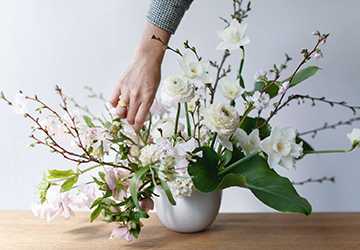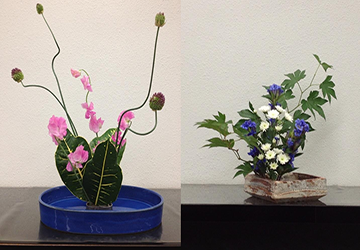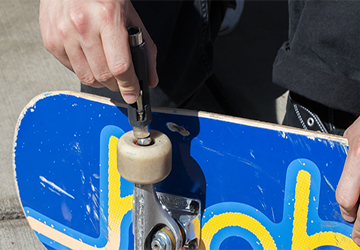In the world of floral art, ikebana represents a calm and delicate way of arranging flowers. Originally from Japan, ikebana means more than placing pretty flowers in a vase. It is a mindful art form that captures the essence of nature and brings it indoors.
This article introduces the top ten flower arrangements with unique charm and personality.
1. Ikenobo - the root of flower arrangement
Ikenobo ikebana is a style deeply rooted in history and spirituality. It's like a window into the past, dating back to the 15th century. Simplicity is the point. They arranged the three main elements into a triangle - heaven, earth, and man.
The tallest branch symbolizes heaven, the middle branch symbolizes earth, and the smallest unit symbolizes man. It reflects the Harmony between man and nature, making it a profound philosophical approach to flower arrangement.

2. Soyuki - Crossing Boundaries
Sogetsu ikebana is all about freeing yourself from the constraints of tradition. This is a more modern, experimental interpretation of the art form. In Sogetsu, you can use a broader range of materials, such as driftwood, wire, and non-traditional containers.
This style encourages artists to think outside the box, creating a more dynamic and modern interpretation of flower arrangements. Sogetsu embodies the idea of finding beauty in the unexpected.
3. Ohara – Capturing natural landscapes
Imagine entering a garden and bringing part of this natural landscape into your home - that's what Ohara Ikebana is all about. This style focuses on recreating landscapes in vases and uses flowers and branches to recreate rolling hills, rivers, and forests.
The artist uses a shallow container to create a panoramic effect, allowing viewers to glimpse the vast outdoors on the tabletop.
4. Moribana – place in a bowl
Moribana Ikebana is like a harmonious dance between flower and container. The name means "stacked flowers," and that's precisely what it means. This style uses shallow vases or bowls to emphasize the height and balance of the arrangement.
The key is to create a harmonious balance between the flower and container so that it looks visually appealing from every angle. Moribana is a careful study of proportion and Harmony.
5. Shoka - Integrity Simplicity
Shoka Ikebana is the embodiment of simplicity and balance. This more minimalist flower arrangement style emphasizes each element's natural beauty. The arrangement usually consists of three main branches: Shin (Sky), Soe (Earth), and Hikae (Humanity).
The arrangement of branches exudes serenity and elegance, creating a sense of calm and tranquility in any room where they are displayed.
6. Nageire – The Art of Pitching
Nageire Ikebana is similar to improvised poetry. It's expressive and dynamic, like throwing flowers into a vase without thinking. However, there is art to it. The idea is to capture the essence of natural randomness and make each arrangement unique and dynamic. Nageire can be a liberating experience for artists, freeing them from rigid structures and opening up the flow of creativity.

7. Jiyuka——Freedom of speech
Jiyuka Ikebana, meaning "freestyle," lives up to its name. There are no rules or specific forms to follow for this style. It is a blank canvas for artists to express their feelings and emotions through flowers. Jiyuka is like a spontaneous dialogue with nature, its choreography evolving with the artist's emotions. This is a free-spirited and free-spirited way to practice ikebana.
8. Rikka - the greatness of nature
Rikka Ikebana is the epitome of grandeur. It's like a majestic forest in a vase. Arrangements can be tall and elaborate, with many branches representing the majesty and generosity of nature. Rikka is often used for special occasions and celebrations as it exudes a sense of luxury and awe. It's a style that commands attention and admiration.
9.Seika——Simple bloom
Seika Ikebana celebrates the beauty of a flower. Seika's arrangements emphasize the elegance and charm of blooming flowers in a simple, uncluttered way. It's all about making a flower sparkle and making it the perfect display of rare or precious blooms.
Seika reminds us that sometimes less is more, and the beauty of a single flower can be as captivating as a bouquet.
10. Chabana – Tea Ceremony and Flower Arrangement
Chabana Ikebana has a specific purpose - to enhance the tranquility of the Japanese tea ceremony "Chanoyu." The arrangements are simple and understated, designed to complement the peaceful atmosphere of the ceremony.
Chabana often uses seasonal flowers, leaves, and branches to create a harmonious atmosphere. It demonstrates the deep connection between ikebana and traditional Japanese rituals, adding an extra layer of meaning to this art form.
Flower Arrangement Beyond Flowers: Cultural and Philosophical Perspectives
Incorporating these elements can enhance the ikebana experience, transforming it into a path toward mindfulness, cultural connection, and celebration of the wisdom of nature.
·Wabi-sabi aesthetics: Flower arrangement embodies the Japanese philosophy of wabi-sabi, which values imperfection, simplicity, and transience in flower arrangements.
· Mindfulness and Meditation: As a meditative practice, flower arranging can promote mindfulness and inner peace in the practitioner's mindfulness of the present moment.
· Seasonal awareness: Ikebana adapts to the changing seasons and uses flowers and branches that symbolize the seasons.
· Harmony with the environment: Ikebana considers spatial and ecological aspects and is in Harmony with the environment.
· Cultural significance: Ikebana plays a vital role in traditional Japanese ceremonies and celebrations, adding to its cultural depth.
Diploma
Ikebana is more than just flower arrangement; It's about understanding and respecting the natural world differently. Each ten ikebana style offers a unique perspective on this ancient art form. Whether you prefer the traditional elegance of Ikenobo or the free expression of Jiyuka, there's an Ikebana style for everyone.
So give it a try and let your creativity run wild. Ikebana invites you to explore the infinite beauty of nature and express it through the art of flower arrangement.
















